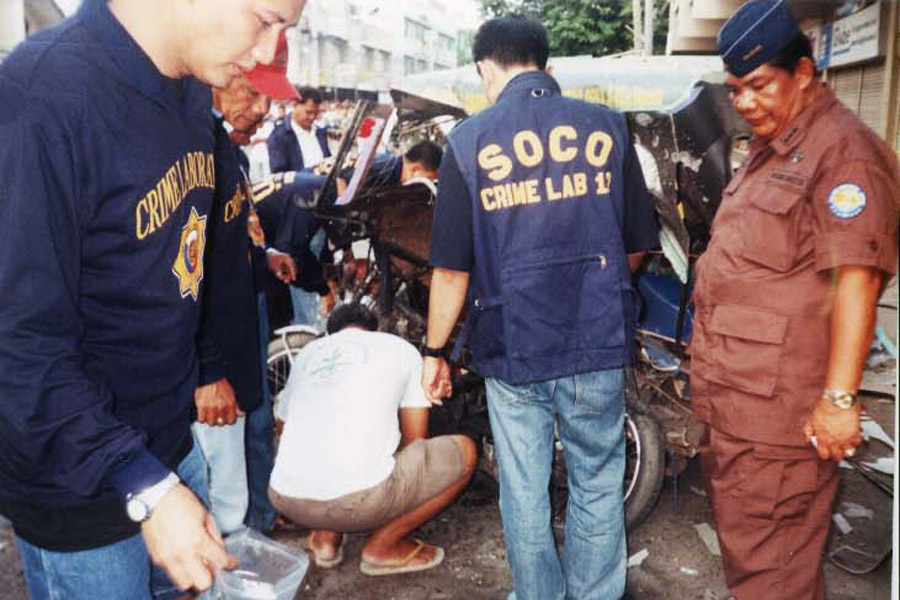This article was first published by Suns.Star Gensan in 2007 (defunct)

The relentless attacks in the city despite avowed efforts to curb terrorist violence may be attributed to the Abu Sayyaf Group which began operating here, according to old timers in the intelligence community, in 1992.
Then known as the Al-harakatul Islamiya, the Abu Sayyaf has since evolved into a ruthless extremist group sowing violence against military and civilian targets.
The presence of Al-harakatul Islamiyah here was exposed by Edwin Angeles, a former ranking member of the Abu Sayyaf who turned, or was already, a government spy.
Several prominent Muslim residents here were tagged was members of an expansion cell of the then little-known group in the city.
The group was said to be behind the Mt. Matutum Hotel bombing in the early 90’s.
When Abdulrahjak Janjalani arrived from his mujaheedin campaign in Afghanistan in his hometown in Sulu, al-Harakatul Islamiyah became better known as the Abu Sayyaf Group, named after his nom de guerre.
A former combatant of Moro National Liberation Front, Janjalani was a deeply religious man who embraced the Islam fundamentalist ideology after his Afghanistan stint.
His death in the late 90’s turned the Abu Sayyaf into a dreaded extremist group which launched violent attacks against innocent civilians and military targets.
In an interview before he was killed in September last year, Abu Sayyaf leader and younger brother of Abdulrahjak Khadaffy Janjalani justified the attacks on civilian targets as part of their extremist ideology.
From mid to late 90’s, activities of the Abu Sayyaf were largely confined in the islands of Sulu and Basilan and Zamboanga.
Intense military operations against the group, however, prompted them to expand their operations in other parts of mainland Mindanao and, to some extent, in the heart of the Philippine capital, in Metro Manila.
Conspiracy theory
Despite military campaigns against the Abu Sayyaf, suspicions that the said extremist group was a creation of the military reached the halls of the Philippine Senate when Senator Aquilino Pimentel leveled his accusations against the Philippine military establishment.
Pimentel claimed the Abu Sayyaf Group was created by the military to drive a wedge between the MNLF and Moro Islamic Liberation Front.
And that it later become an instrument to justify military presence in Mindanao .
This was further bolstered when reports of huge payoffs leaked into the press during the infamous Lamitan siege where hundreds of suspected Abu Sayyaf members, along with their hostages, were surrounded by government troops.
Allegations of high-ranking military generals holding back their troops to allow the Abu Sayyaf to escape for monetary considerations were hurled and investigated but were never substantiated.
Both the Abu Sayyaf and the Philippine military establishment however vehemently denied Pimentel’s charges.
Logical choice
General Santos, for all its advantages and disadvantages politically and economically, has become a regular target of terrorist attacks.
With its porous borders and proximity to rugged terrains that surrounded the city, it makes perfect and ideal target for guerrilla-type urban attacks.
It could as well be an excellent laboratory for applying military tactics, both from the overview of the Philippine military and terrorists of all types.
No wonder, a steady stream of American military operatives and advisers has been silently slipping in and out of the city. At the height of the military campaign in 2003 when Khadaffy Janjalani was reported to have landed in Palembang, Sultan Kudarat, scores of US servicemen and military officials reportedly brought with them sophisticated tracking equipment in an effort to flush out the then elusive Abu Sayyaf leader.
With all known “enemies of the state” operating in the city and its proximate environ, military success or failure on the part of the government could make or break one’s military or police career.
On the part of any terrorist organization, the same logic applies.
Good and evil?
With the increasing incident of violent attacks and with the apparent ease with which the perpetrators are having in launching them, both the civilian and military establishments have been placed under heavy scrutiny.
Mayor Pedro Acharon Jr. however has repeatedly said they have been exercising all efforts to deflect these terrorist activities while at the same time assuring residents here that it is business as usual despite the many casualties already suffered by the city.
Earlier efforts of the military and the police to dichotomize these violent incidents into a choice between good and evil has apparently failed with residents here driven to numbness because of the alarming frequency of the attacks.
Previous police excesses against suspected attackers which turned out to be innocent civilians did not help either.
As one hospital administrator once aptly asked right after the Fitmart explosion in 2002, “What is happening to our city?”
Indeed, this question will continue to hound the police and military and local government leaders as well.



